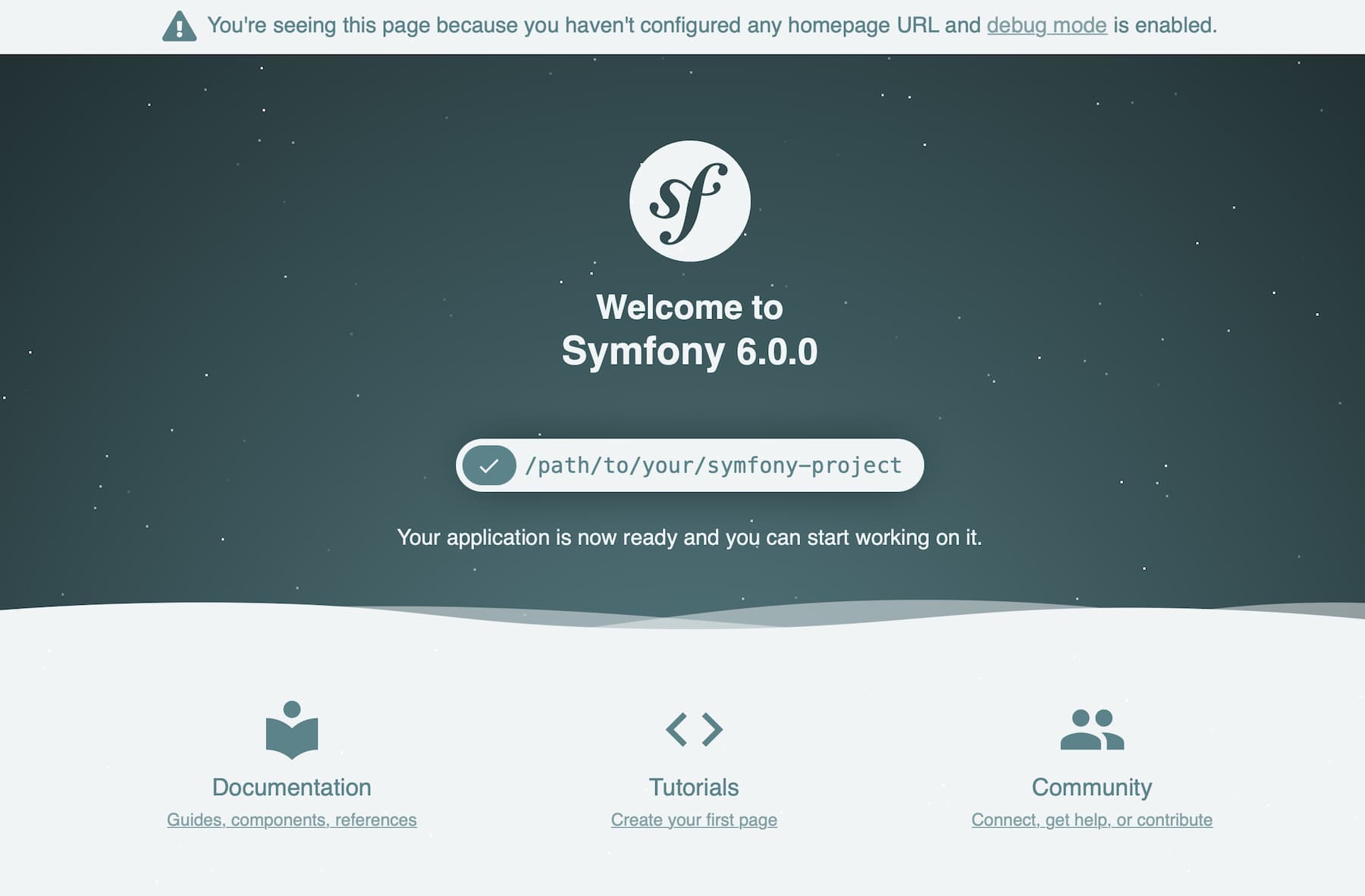The Big Picture
Start using Symfony in 10 minutes! Really! That's all you need to understand the most important concepts and start building a real project!
If you've used a web framework before, you should feel right at home with Symfony. If not, welcome to a whole new way of developing web applications. Symfony embraces best practices, keeps backwards compatibility (Yes! Upgrading is always safe & easy!) and offers long-term support.
Downloading Symfony
First, make sure you've installed Composer and have PHP 8.1 or higher.
Ready? In a terminal, run:
1
$ composer create-project symfony/skeleton quick_tourThis creates a new quick_tour/ directory with a small, but powerful new
Symfony application:
1 2 3 4 5 6 7 8 9 10 11
quick_tour/
├─ .env
├─ bin/console
├─ composer.json
├─ composer.lock
├─ config/
├─ public/index.php
├─ src/
├─ symfony.lock
├─ var/
└─ vendor/Can we already load the project in a browser? Yes! You can set up
Nginx or Apache and configure their
document root to be the public/ directory. But, for development, it's better
to install the Symfony CLI tool and run its
local web server as follows:
1
$ symfony server:startTry your new app by going to http://localhost:8000 in a browser!

Fundamentals: Route, Controller, Response
Our project only has about 15 files, but it's ready to become a sleek API, a robust web app, or a microservice. Symfony starts small, but scales with you.
But before we go too far, let's dig into the fundamentals by building our first page.
In src/Controller, create a new DefaultController class and an index
method inside:
1 2 3 4 5 6 7 8 9 10 11 12 13 14
// src/Controller/DefaultController.php
namespace App\Controller;
use Symfony\Component\HttpFoundation\Response;
use Symfony\Component\Routing\Attribute\Route;
class DefaultController
{
#[Route('/', name: 'index')]
public function index(): Response
{
return new Response('Hello!');
}
}That's it! Try going to the homepage: http://localhost:8000/. Symfony sees
that the URL matches our route and then executes the new index() method.
A controller is just a normal function with one rule: it must return a Symfony
Response object. But that response can contain anything: simple text, JSON or
a full HTML page.
But the routing system is much more powerful. So let's make the route more interesting:
1 2 3 4 5 6 7 8 9 10 11 12 13 14 15
// src/Controller/DefaultController.php
namespace App\Controller;
use Symfony\Component\HttpFoundation\Response;
use Symfony\Component\Routing\Attribute\Route;
class DefaultController
{
- #[Route('/', name: 'index')]
+ #[Route('/hello/{name}', name: 'index')]
public function index(): Response
{
return new Response('Hello!');
}
}The URL to this page has changed: it is now /hello/*: the {name} acts
like a wildcard that matches anything. And it gets better! Update the controller too:
1 2 3 4 5 6 7 8 9 10 11 12 13 14 15 16 17
<?php
// src/Controller/DefaultController.php
namespace App\Controller;
use Symfony\Component\HttpFoundation\Response;
use Symfony\Component\Routing\Attribute\Route;
class DefaultController
{
#[Route('/hello/{name}', name: 'index')]
- public function index()
+ public function index(string $name): Response
{
- return new Response('Hello!');
+ return new Response("Hello $name!");
}
}Try the page out by going to http://localhost:8000/hello/Symfony. You should
see: Hello Symfony! The value of the {name} in the URL is available as a $name
argument in your controller.
But by using attributes, the route and controller live right next to each
other. Need another page? Add another route and method in DefaultController:
1 2 3 4 5 6 7 8 9 10 11 12 13 14 15 16
// src/Controller/DefaultController.php
namespace App\Controller;
use Symfony\Component\HttpFoundation\Response;
use Symfony\Component\Routing\Attribute\Route;
class DefaultController
{
// ...
#[Route('/simplicity', methods: ['GET'])]
public function simple(): Response
{
return new Response('Simple! Easy! Great!');
}
}Routing can do even more, but we'll save that for another time! Right now, our app needs more features! Like a template engine, logging, debugging tools and more.
Keep reading with Flex: Compose your Application.